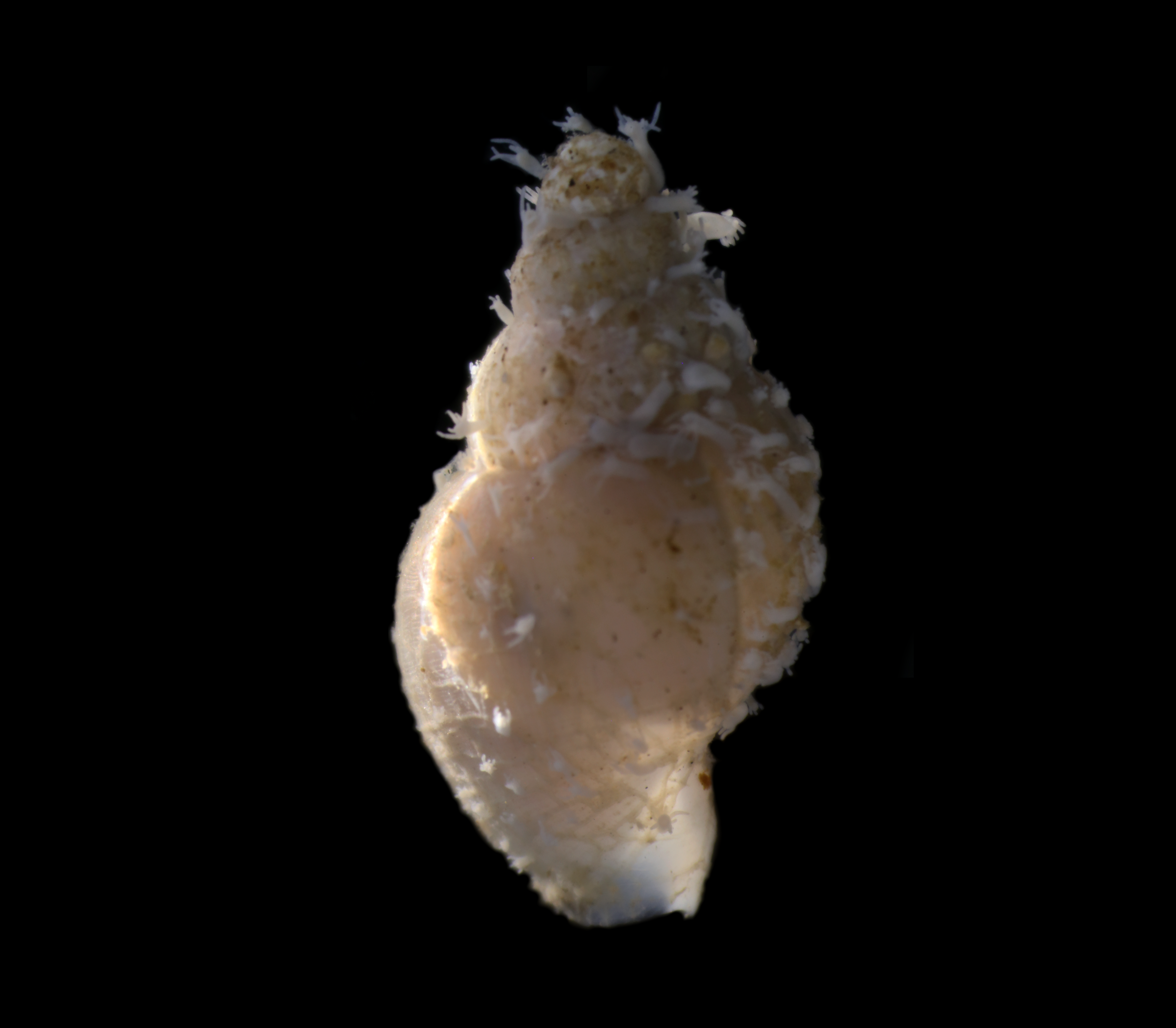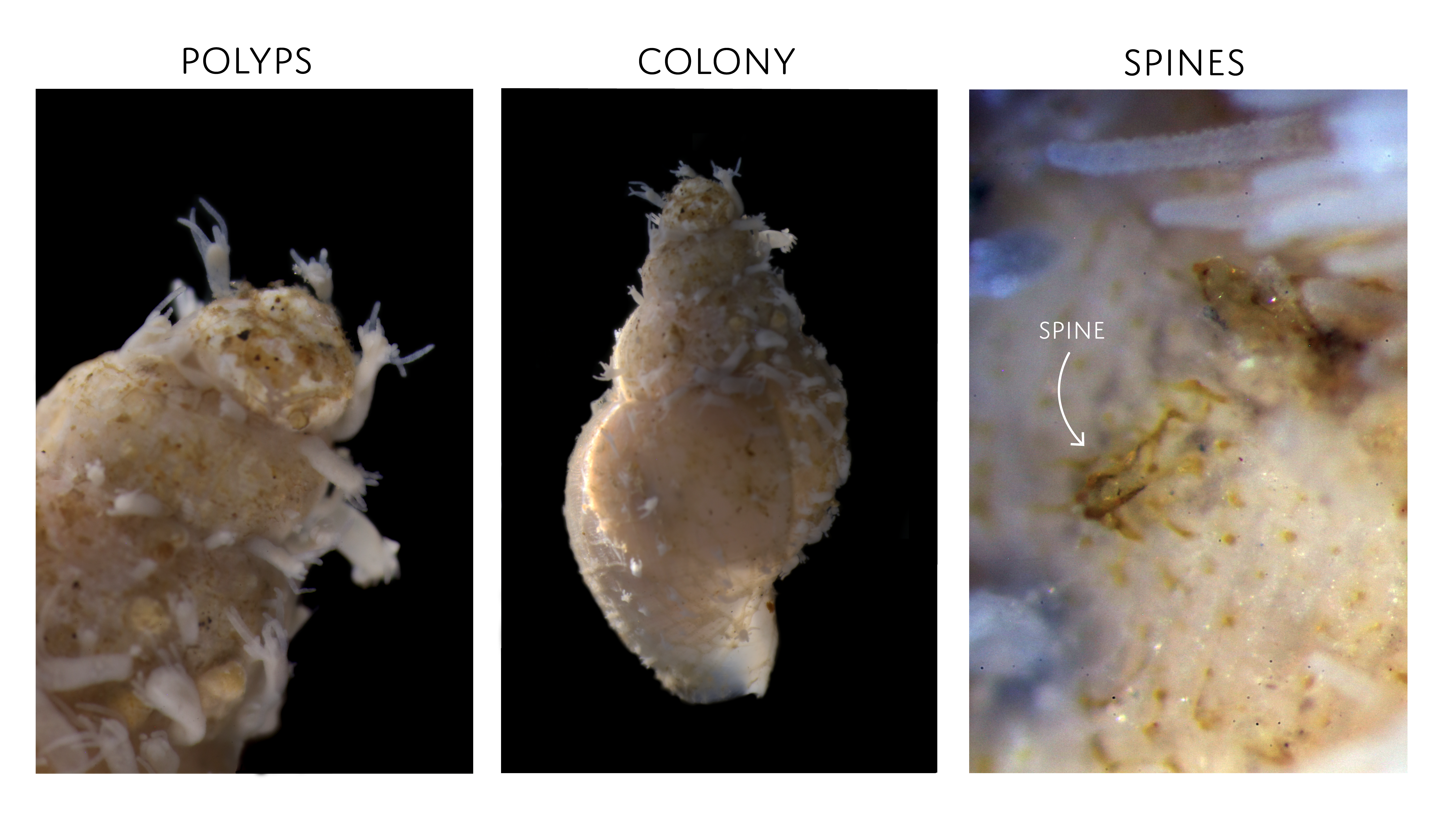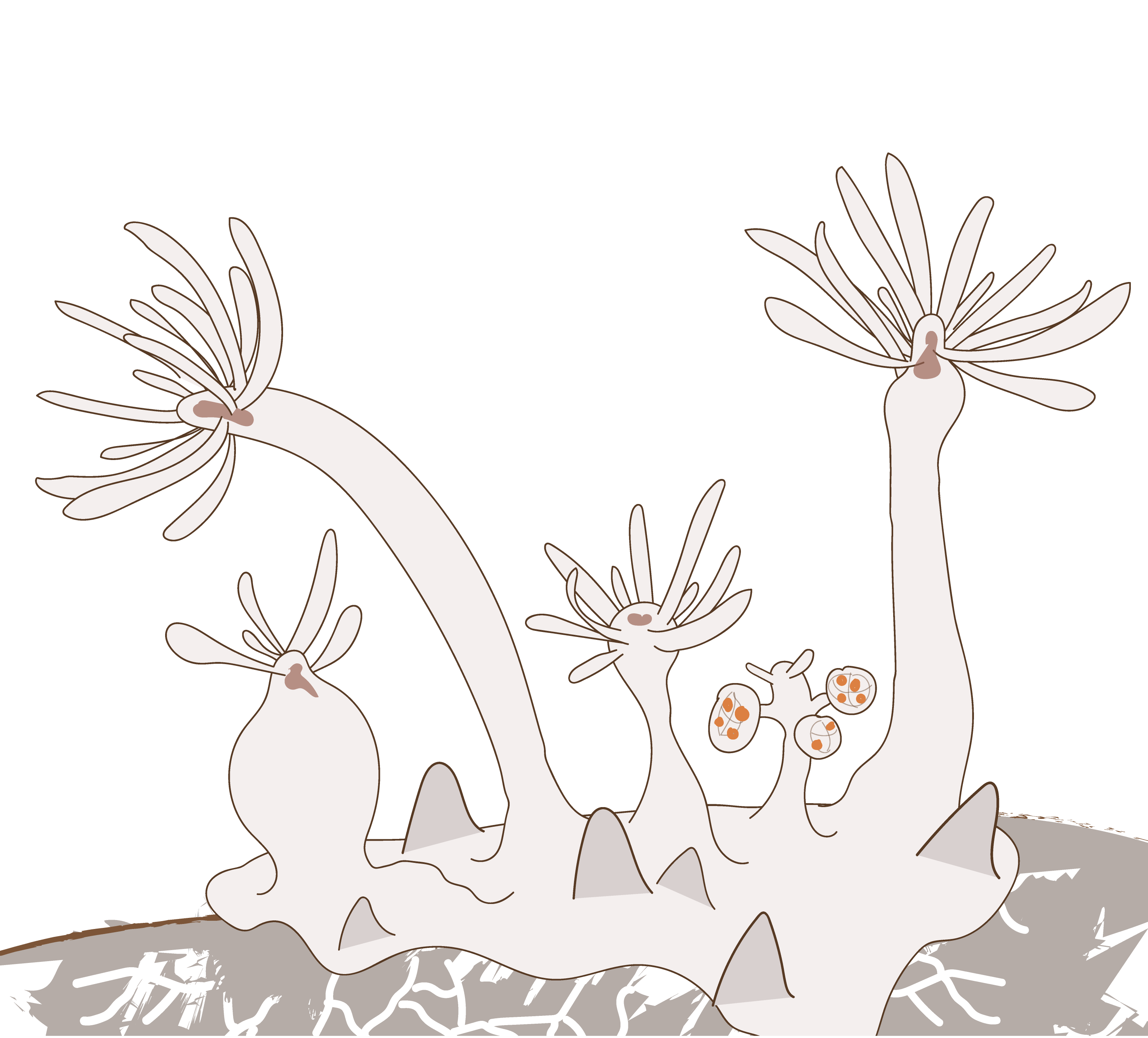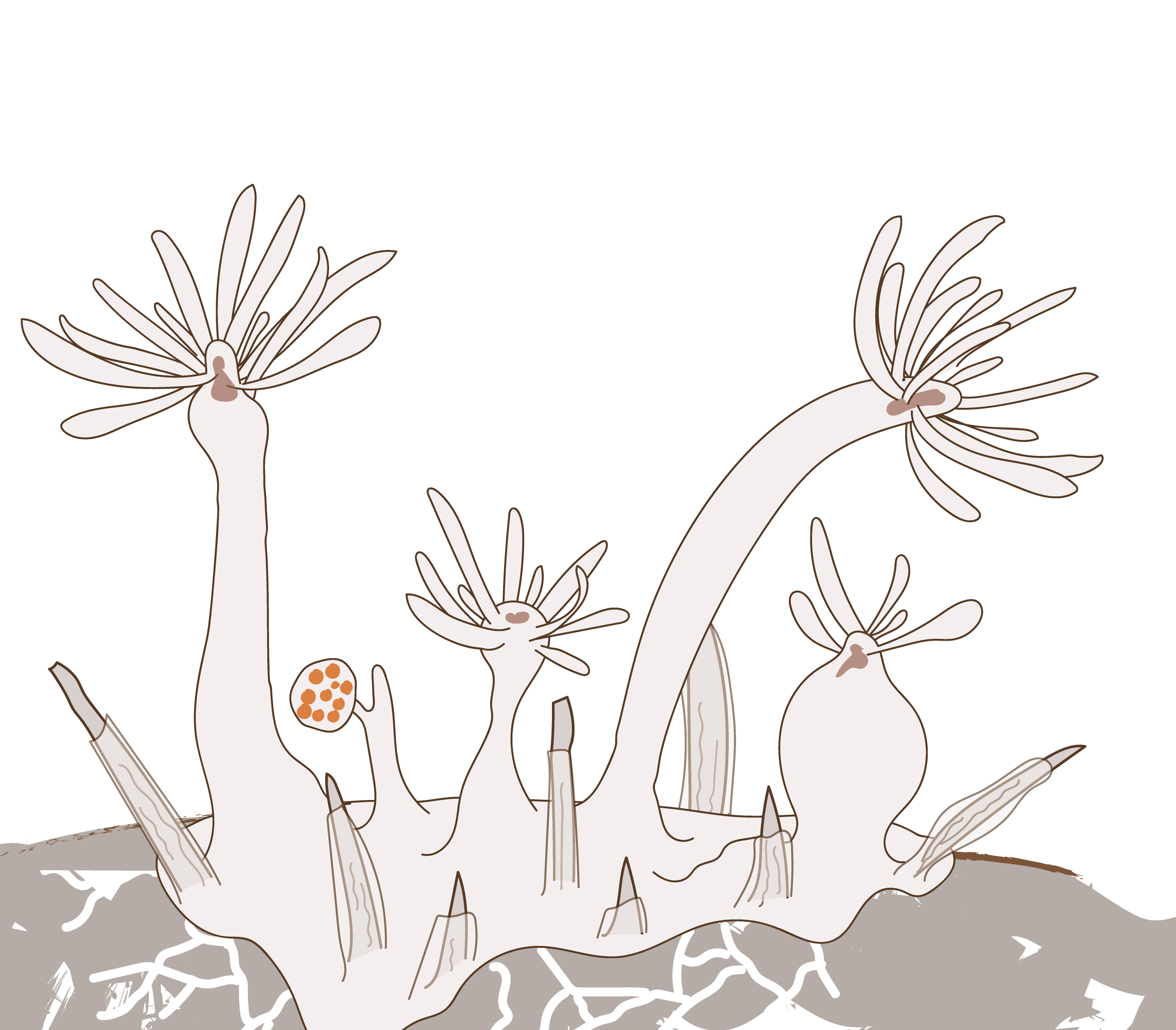Clavactinia serrata
Clavactinia serrata is a little-known species restricted to Arctic waters, where its colonies grow on marine snails of the genus Buccinum. The combination of their preferred substrate, serrated spines, and gonophores developing at the base of the gonozooids render this species distinguishable from other Arctic hydractiniids.
Colony preserved in ethanol, growing on Buccinum sp.
Identification
The colonies of C. serrata have feeding polyps (gastrozooids) and reproductive polyps (gonozooids) which differ greatly from each other. The gastrozooids are up to 3 mm high and have 8–12 tentacles in a single whorl. The gonozooids are much smaller (up to 0.5 mm) than the gastrozooids and have 0–8 tentacle stumps, but no real tentacles. Each gonozooid produces 1–4 gonophores at its base, in contrast to all the rest of hydractiniid species that occur in Norway, in which the gonophores are produced in the upper part of the gonozooid. Whenever the colonies have spines these are serrated at the edge. The gonophores are fixed sporosacs, each female gonophore has only 1 egg.
Details of a preserved specimen of Clavactinia serrata.
Look-alikes
In Norway, Clavactinia serrata is the only Arctic hydractiniid species growing on live snail shells that has colonies with serrated spines, which distinguish this species from the similar-looking Hydractinia carica and Hydractinia monocarpa.
Biology, ecology and behavior
The colonies grow preferably on snail shells of the genus Buccinum (for example B. belcheri, B. glaciale, and B. hydrophanum). Clavactinia serrata has been found at depths between 15 and 300 m.
Distribution
This is a strictly Arctic species, with confirmed records in Svalbard, Greenland, and the Barents Sea.
References
Schuchert P (2008). The European athecate hydroids and their medusae (Hydrozoa, Cnidaria): Filifera Part 3. Revue suisse de Zoologie 115(2):221–302.



